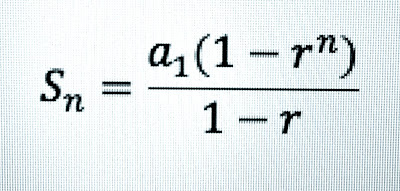Let b and c be real numbers and let n be a positive integer.

Operations with Limits:
Let b and c be real numbers, let n be a positive integer, and let f and g be functions with the following limits:
 1. Scalar multiple:
1. Scalar multiple:
2. Sum or difference:

3. Product:

4. Quotient:

5. Power:

Direct Substitution:
You have seen that sometimes the limit of f(x) as x approaches c is simply f(c). In such cases, it is said that the limit can be evaluated by direct substitution.
 Finding the limit using direct substitution is fairly easy. Just plug the c-value into the function and then solve using simple algebra skills.
Finding the limit using direct substitution is fairly easy. Just plug the c-value into the function and then solve using simple algebra skills.Continuity:
A graph is discontinuous if there are any:
- holes
- asymptotes
- breaks
 Here, f is continuous at a.
Here, f is continuous at a.T or F?
If...

then f is continuous at a.
This is FALSE.
This proves that there is in fact a limit, but it's not for certain that the graph is continuous.









































